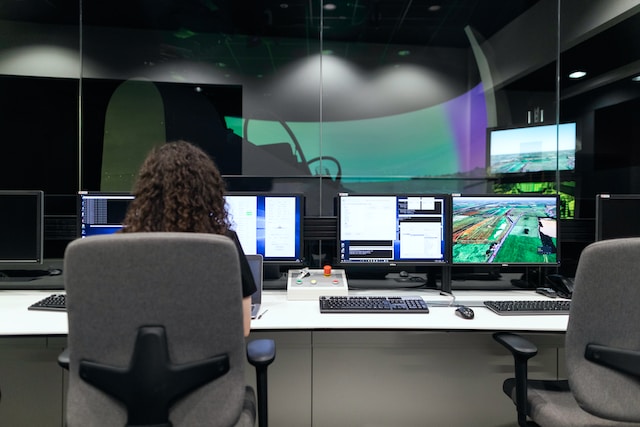The text discusses software and its potential uses in various industries and sectors. Software has become an integral part of our lives, driving innovation and efficiency across multiple domains. From healthcare to finance, education to entertainment, the applications of software are limitless. In this article, we will explore the diverse uses of software in different industries and the impact it has on our daily lives.
One industry that heavily relies on software is healthcare. Electronic Health Records (EHR) have revolutionized patient care by improving accessibility to medical information. With EHR systems, doctors can easily access a patient’s medical history, test results, allergies, and prescribed medications with just a few clicks. This not only saves time but also reduces the chances of errors that could occur due to manual record-keeping.
Furthermore, sophisticated imaging software has enhanced diagnostic accuracy in fields like radiology. Advanced algorithms can analyze medical images such as X-rays or MRIs to detect anomalies that may be missed by human eyes alone. This technology enables early detection of diseases like cancer and improves treatment outcomes.
Another sector where software plays a critical role is finance. Banks and financial institutions rely on robust software systems for seamless financial transactions and data analysis. Online banking platforms allow customers to manage their accounts from anywhere at any time securely.
Moreover, algorithmic trading has transformed stock markets worldwide by automating trading decisions based on predefined strategies or mathematical models programmed into sophisticated trading platforms. These systems execute trades at lightning-fast speeds without human intervention while minimizing risks associated with emotional decision-making.
Education is another domain that leverages technology through educational software applications or e-learning platforms for remote learning purposes. With these tools, 텔레그램 자동 매크로, students can access educational content online anytime they want while teachers can monitor their progress effectively.
In addition to traditional subjects like math or science tutoring programs targeted towards specific areas are gaining popularity among students seeking specialized knowledge enhancement outside classrooms’ boundaries.
The entertainment industry also owes much of its success today to various types of software. Video game development has become a multi-billion-dollar industry, with complex software engines powering cutting-edge graphics and immersive gameplay experiences. Virtual Reality (VR) and Augmented Reality (AR) technologies have transformed the way we consume entertainment, allowing us to engage with virtual worlds or overlay digital information on the real world.
Moreover, streaming services like Netflix or Spotify rely on sophisticated recommendation algorithms to personalize content based on individual preferences. These algorithms analyze user data such as viewing history or music taste to suggest relevant shows or songs, keeping users engaged and satisfied.
Software also plays a vital role in transportation and logistics industries. GPS navigation systems have revolutionized how we travel by providing accurate real-time directions to our destinations. Additionally, logistics companies use software solutions for optimized route planning, inventory management, tracking shipments’ progress in real-time while ensuring timely deliveries.
In manufacturing industries, computer-aided design (CAD) software enables engineers to create intricate product designs quickly and accurately before going into production. This helps minimize costly errors that can occur during the design phase while improving overall efficiency.
Furthermore, automation software has transformed production lines by controlling robots and other machines that perform repetitive tasks with precision and speed. This not only increases productivity but also reduces human error rates significantly.
As technology continues to advance at an exponential rate, so does the potential for innovative uses of software in various industries. From Artificial Intelligence (AI) applications enabling predictive analytics to Internet of Things (IoT)-enabled devices communicating seamlessly through interconnected networks – there seems to be no limit as to what can be achieved through the power of well-designed software systems.
However, it is crucial always to consider potential risks associated with reliance on technology alone without proper human oversight or intervention when required – especially concerning critical sectors like healthcare or finance where even minor errors could have severe consequences.
In conclusion ,the applications of software are vast across different industries and sectors. It has revolutionized healthcare by improving patient care and diagnostic accuracy. The finance sector relies on software for seamless transactions and data analysis. Education benefits from software through e-learning platforms and specialized tutoring programs. Software powers the entertainment industry, providing immersive experiences and personalized content recommendations. Transportation and logistics industries utilize software for navigation, route planning, inventory management, and tracking shipments. Manufacturing industries benefit from CAD software for product design and automation solutions for increased efficiency. With the continuous advancement of technology, the potential uses of software are limitless, bringing forth new opportunities while also urging caution in maintaining a balance between technological reliance and human intervention.
In conclusion ,the applications of software are vast across different industries and sectors. It has revolutionized healthcare by improving patient care and diagnostic accuracy. The finance sector relies on software for seamless transactions and data analysis. Education benefits from software through e-learning platforms…
